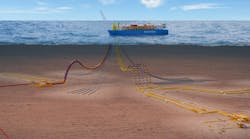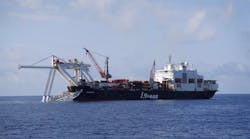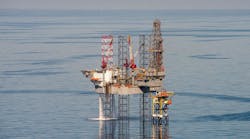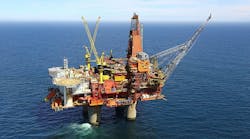Offshore staff
WASHINGTON, D.C. – The Aramco Research Center-Boston is working with scientists at the US’ Center for Integrated Nanotechnologies (CINT) at Sandia National Laboratories to investigate the nanoscale mechanisms that cause corrosion and its subsequent progression in steel.
Recently, this team’s work was brought to the attention of the US Senate’s Energy and Natural Resources Committee at a user science exhibition.
Aramco’s Rachael Grudt said: “Uniformed corrosion progresses at a predictable rate based on conditions. However, localized corrosion, which can progress much faster than uniformedcorrosion, is very poorly understood, and therefore, much more challenging to predict.
“It is localized corrosion that often leads to infrastructure and pipeline failures sooner than expected, with varying degrees of catastrophe resulting.”
At the exhibition, senators were invited to use a light board and puzzle with various graphical data sets the team had 3D printed using in-house capabilities from the Boston center.
The final technique allowed the senators to observe the team’s most recent advance – flowing a liquid solution over a steel sample roughly the size of a bacterium inside an electron microscope and watching in real time as corrosion developed at the nanoscale level.
“Our collaboration with CINT allows us to apply highly scientific, cutting-edge technologies to understand corrosion of real-world pipeline steel,” said Aramco’s Steven Hayden.
“Our recent observations have identified a weakest link in the steel structure, which has potentially huge repercussions for how steels are processed and for the advancement of the corrosion prediction models that are ubiquitous in industry.”
Next steps for the team will include examining various coatings and processes by which steel could be made less susceptible to corrosion.
06/18/2018




